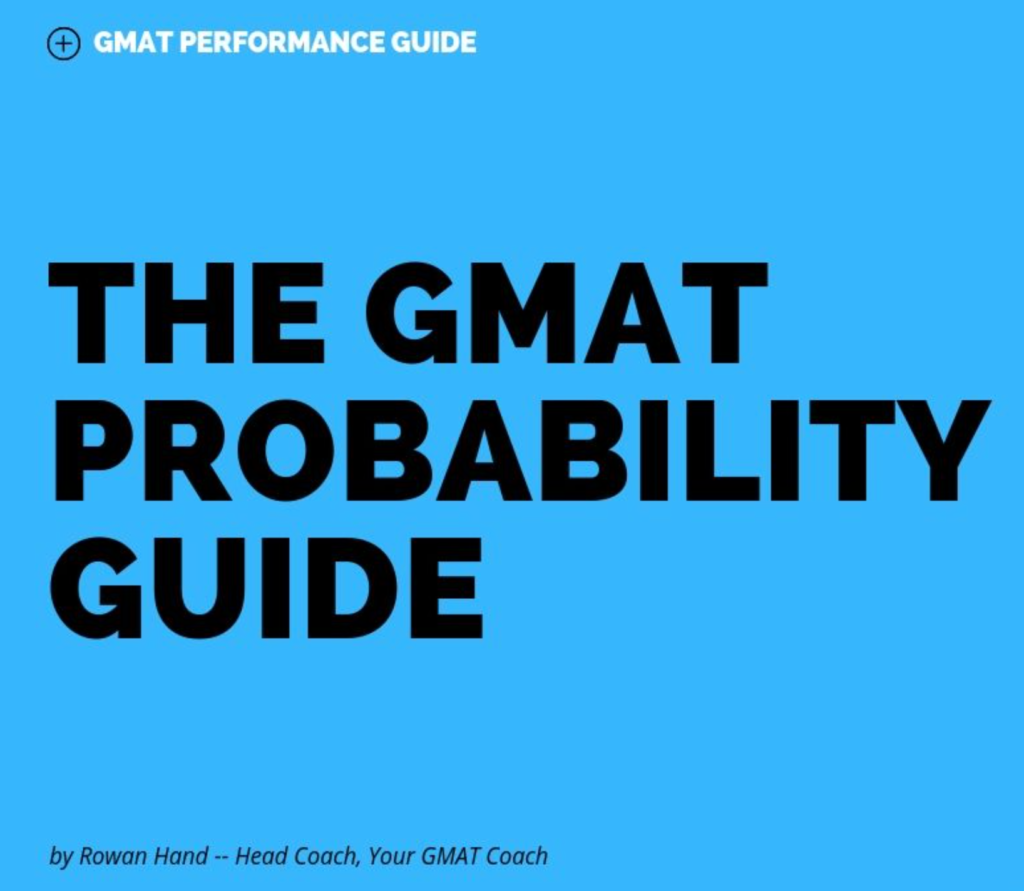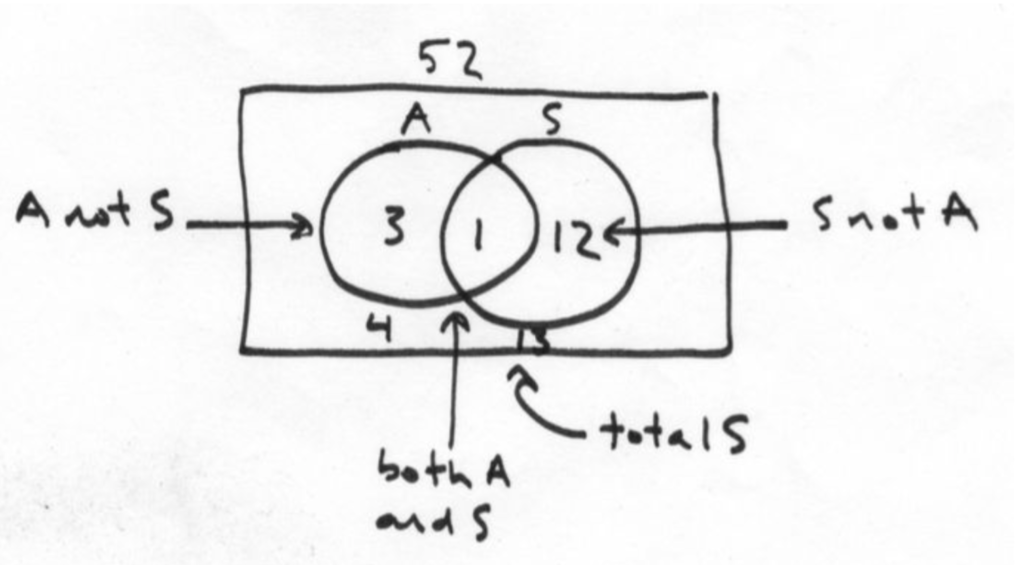“At Least” Problems in GMAT Probability
Hey, remember how all the Probabilities have to be fractions less than one? I mean, after all, it’s reasonably rare for there to be a greater than 100% chance that something will happen.
The other thing to bear in mind is that a full Probability–anything that is forgone conclusion–is represented as 1. In other words, that means…
(all the possibilities)/(all the possibilities) =1
That is, a 100% chance (where, for example, ½ would be a 50% chance).
Now get this: if the Total Probability is 1, then we have a closed system. We can actually work down from the Total Probability to get where we want to go, just as we can work up from nothing.
In the case of at least or at most questions, it’s actually often simpler to structure our thinking this way.

That is, we can say that:
What We Want: Total Probability – What We Don’t Want
The conceptual key here is that the Total Probability is totally obvious (it’s 1, remember?), and the What We Don’t Want is going to be relatively small, at least compared to the Total Probability.
The smaller the What We Don’t Want, of course, the easier it will be to calculate.
If this is all seeming a bit weird, let’s look at an example. It’ll be simplest to start with an Independent case.
“At least” in Independent Probability
A coin is flipped five times. What is the Probability that the coin will turn up Heads at least once?
First, of course, we need to figure out the total number of Possible flips. Remember, each flip has two potential outcomes. That gives us:
2*2*2*2*2=32 total possibilities
Now, let’s think about how we’ll get at least one Head. Remember, it’s 1 – What We Don’t Want.
1 – no Heads=at least one Head
What are we missing? Easy, the no Heads situation. Therefore, we simply need to calculate this:
no Heads = TTTTT =(1/2)(1/2)(1/2)(1/2)(1/2)=1/32
All we have to do at this point is plug and play:
1 – no Heads=at least one Head
1 – 1/32=31/32
Therefore, the Probability that we will get at least one Head is 31/32.
Reversing direction in GMAT Probability:
Of course it is entirely possible that we can do the same calculation by counting up instead of counting down. If we wanted at least one Head from five turns, that would present as:
At least one Head = one Head + two Heads + three Heads + four Heads + five Heads
Then, of course, we’d need to figure out the probability of getting one Head, two Heads, and so on.
The problem with a case such as calculating the Probability of getting one Head is that the distribution looks like this:
HTTTT
Or is it like this?
THTTT
Or like this?
TTHTT
Or like this?
TTTHT
Or like this?
TTTTH
Or any one of the five ways that we select it. After all, we don’t specify in which turn we choose the head. What to do?
Again, we’ll address this in the upcoming chapter on Number of Distributions x Probability per Distribution.
If you want more GMAT Probability resources, there is a huge list here!
“At least” in Dependent Probability
If a committee of three people is to be selected from a group of 20 people that is 85% female, what is the Probability that at least one woman will be selected?
First, we need to figure out what the actual numbers of people are: if the group of 20 is 85% female, then we can see that it consists of 17 women and 3 men.
(If you’re wondering how I did that so quickly, just multiply the 20 people by 5 to represent it in terms of 100. This implies that the 85% (or 85/100) is also scaled up by 5. Divide 85 by 5 to get our number 17).
In this case, because we’re dealing with “at least,” remember that in GMAT Probability we’re looking for what we don’t want. In this case, it is the no women situation, or:
P(M)*P(M)*P(M)
(3/20)(*2/19)(1/18) =(1/10)*(1/19)*(1/6) =1/1140
From here, it’s really easy! Remember, the total Probability is simply 1. That gives us:
P(at least one woman)=1-P(no women) = 1-1/1140 = 1139/1140
That’s the technical solution, although in a practical sense it doesn’t matter that much.
Now… notice that our outcome would be quite a bit different if the question asked us to consider, for example, two women and one man. In this case, we’d have to subtract all three of these situations:
P(M)*P(W)*P(W)
P(W)*P(M)*P(W)
P(W)*P(W)*P(M)
In other words, it’s only because there’s only one distribution for the man/man/man situation that we are able to subtract it only once.
GMAT Probability doesn’t tend to give us ridiculously complicated Probability questions. How can we tell what the different distributions would bey? That’s discussed in the next post: Number of Distributions x Probability per Distribution.
Like what you’ve seen here? Check out the GMAT Probability Guide here.






